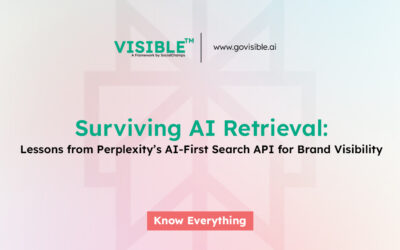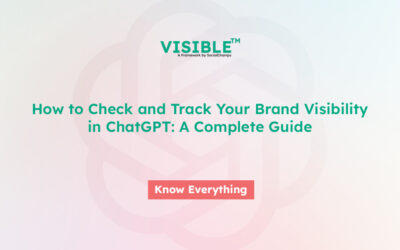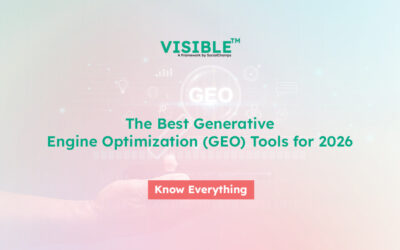What is Structured Content Engineering?
Definition and Origin
At VISIBLE™, we define structured content engineering as the systematic design of content objects optimized for machine interpretation. By “content objects,” we mean self-contained units of content—such as an FAQ entry, product spec, or testimonial—that are structured with specific fields, metadata, and semantic tags to make them machine-readable and modular. This discipline merges content strategy, data modeling, and AI-era taxonomy design to build content that isn’t just human-readable but AI-readable. as the systematic design of content objects optimized for machine interpretation. This discipline merges content strategy, data modeling, and AI-era taxonomy design to build content that isn’t just human-readable but AI-readable.
This field draws from decades of work in information architecture, CMS design, and semantic web principles. But in the age of LLMs and Generative Engine Optimization (GEO), it’s no longer optional. It’s the backbone of visibility.
AI doesn’t read content like humans. If your brand is still publishing flat, page-based content, you’re building in the dark.
Why It Matters in the GEO Era
In traditional SEO, we optimized for rank. In GEO, we optimize for readability and retrievability by machines. Structured content engineering ensures your brand’s knowledge assets are parseable by AI systems powering co-pilot interfaces, search agents, and feed-ranking engines.
The Core Principles of Structuring Content for AI
Content as Data: Treating Content Like a System
Structured content treats each unit as a data object. Every headline, stat, quote, or paragraph becomes part of a system. Content is modular, reusable, and metadata-rich.
This approach makes it:
- Easier to index by AI systems
- More adaptive to multiple interfaces (chatbots, co-pilots, voice)
- Capable of continuous performance optimization
Modularity, Metadata, and Models
To be AI-readable, content must be:
- Modular: Break large content into reusable components
- Tagged: Use schema, entity references, and context markers
- Modeled: Align structure to machine learning patterns (ontologies, knowledge graphs)
VISIBLE™ Framework’s Entity Depth Index helps assess the semantic richness of content modules—critical for high AI activation.
Real Brand Examples
How Adobe Uses Modular Content Systems
Adobe’s Experience Manager (AEM) embodies modular thinking. Content blocks—such as product descriptions, user guides, and support messages—are stored in a central library and tagged with reusable metadata. These components are dynamically assembled across multiple delivery channels, including web, email, and support portals. This structured architecture powers feed personalization and interface adaptability through Adobe Sensei.
HubSpot’s API-Ready Content Design
HubSpot’s content infrastructure is built for API-driven reuse. Each asset—whether a blog, CTA, or form—is componentized and embedded with semantic tagging. This design enables fast delivery to chatbots, landing pages, and CRM workflows.
Angela DeFranco, VP of Product at HubSpot, emphasized: “Structured content is critical for ensuring our users can build once and reuse anywhere—whether that’s an email, a landing page, or a chatbot interface”.
The Structured Stack: VISIBLE™ Framework’s Content Architecture Model
Layer-by-Layer Breakdown
- Content Object Design: Every piece starts as a structured object with defined fields
- Metadata & Taxonomy Alignment: Rich semantic tagging using VISIBLE™ Framework’s Prompt Bank
- AI-Crawlability Layer: Ensures visibility to LLMs via clean hierarchy and syntax
- GEO-Enriched Layer: Optimized for generative engines using Prompt Bank-recommended patterns
- Activation Endpoints: Structured for reuse across interfaces: search, co-pilot, feed
How Each Layer Optimizes AI Performance
Each layer in the VISIBLE™ Framework’s Structured Stack within the VISIBLE™ Framework systematically eliminates ambiguity and aligns content with the interpretive logic of AI systems. By progressively layering structure—from content objects to activation endpoints—we ensure that each piece of content is fully accessible, indexable, and contextually relevant to LLMs and generative engines. For instance, our AI-Crawlability Diagnostic Layer flags where taxonomy mismatches or syntax flaws hinder LLM parsing.
From SEO to GEO: Why Structured Content is the Bridge
Where SEO was about keywords and links, GEO focuses on context and structure.
With structured content engineering, brands stop guessing what LLMs see. They start designing for it.
This bridge enables:
- Faster LLM indexing
- Higher Visibility Scores in co-pilot and search
- Greater ROI from existing content investments
Building AI-Readable Content Starts at the Source
“Structure isn’t a retrofit. It’s an authoring mindset. When content is born structured, everything downstream—from feeds to co-pilots—works better.”
Curious how structured your content is? Request a VISIBLE™ Content Structure Audit.
How VISIBLE™ Enables Structured Content
We’ve embedded structured content engineering into the VISIBLE™ Platform. Here’s how:
- Content Object Modeling Engine: Build AI-optimized structures at creation
- Prompt Bank Integration: Ensure every module aligns with generative engine triggers
- AI-Crawlability Diagnostic Layer: Identify blind spots in your content stack
The VISIBLE™ Platform helps users design, diagnose, and deploy content for maximum AI impact.
Structured Today, Discoverable Tomorrow
We believe the shift to AI-readable content isn’t theoretical—it’s operational and already reshaping how digital ecosystems prioritize visibility. It’s operational.
If your brand doesn’t adopt structured content engineering, you’ll be invisible to the next generation of digital interfaces.
Download our Structured Content Engineering Guide for CMOs & Product Teams.






